Helpful tips: how to grow pomegranate at home
Many southern plants that produce tasty fruits can be successfully grown indoors. These include Garnetcultivated in subtropical and tropical areas. The dwarf tree will serve as a decoration for the house during flowering and will give unusually healthy fruits.
The cultivation of fruit plants of southern origin requires special preparation. For many years, flower growers have been distributing various varieties of Dwarf, Ordinary pomegranate. Homemade specimens take root well, delight with fragrant delicate flowers, small fruits. Growing a plant will require patience, knowledge in this difficult process.
Content:
- Preparation of bones, soil, containers for planting a pomegranate
- Planting time and rules
- Growing indoor pomegranate from cuttings
- Fruit tree care
- Transplant rules, pomegranate pruning
- Fight against plant diseases and pests
Preparation of bones, soil, containers for planting a pomegranate
The procedure for growing plants from seeds, seeds begins with a lot of preparatory work:
- Grain grenade can be taken from the purchased fresh fruit, on which there should be no mold, rot, no spots on the skin. The bones pulled out of the fruit are thoroughly washed under warm running water, removing the pulp. For planting, you need to have hard, cream-colored seeds. They are immersed in Zircon solution for twelve hours.
- The soil for pomegranate seeds is prepared from a mixture of sod, leafy soil, humus, river sand, taken in equal amounts. Ready-made soil can be purchased at the store, recommended for roses, begonias... The soil must be steamed in the oven a week before planting or spilled with boiling water to kill pathogenic bacteria and fungi. After that, the earth should be saturated with useful air for five to six days.
- Container for germinating seeds it is also disinfected with a low concentration potassium permanganate solution.
Pomegranate seeds are planted in a nutrient mixture of soil to a depth of at least one centimeter, covering the containers with a film. The greenhouse effect will allow them to germinate quickly, and a room temperature of up to 25 degrees Celsius will speed up the process.
If pomegranate seeds fall into the ground in early November or March, then in a week or two, green shoots will appear. The rest of the time, planting seeds will bring results only after two months, and sometimes they germinate in six months. The time spent on preparing pomegranate seeds for sowing will not be wasted - seedlings will quickly begin to grow.
Planting time and rules
At the end of November or March, containers with green pomegranate seedlings are placed in a bright room, and when three leaves appear on them, they begin to be planted in a permanent place in an individual pot. It may not be too deep as root system the pomegranate tree is close to the surface of the earth.
Good drainage in containers is necessary - a layer of expanded clay or crushed stone is poured onto the bottom.
The soil prepared for planting should consist of forty percent of sod land, 30% of leaf, the rest - sand, peat. In order for the tree to grow lush, it is necessary to pinch the top above the third leaf during planting.
For pomegranate seedlings, good lighting... Seedlings planted in the fall will require additional lighting, otherwise they can be thin and elongated. Spring planting of seeds allows the young plant to grow stronger, it can be exposed to fresh air on warm summer days. After a year, the pomegranate will begin to bloom. This is a sign that the planting deadlines and rules have been met.
Growing indoor pomegranate from cuttings
Reproduction of the pomegranate occurs and cuttings, which are prepared either in February or in July. This method is always successful if certain rules are followed:
- Cuttings are harvested with the growth of the current year, their length should be at least ten centimeters. Suitable for planting and material cut from root shoots.
- Before planting, the branches are soaked for six hours in a solution of a growth stimulant, then rinsed under running water.
- The prepared material is planted in coarse river sand 2-3 centimeters deep, sprinkled with nutritious soil on top.
- The container for the pomegranate should not be too large. Bloom and fruiting is best when the roots are closely intertwined in the pot.
- From above, the container with a pomegranate is covered with a jar, placed in a warm room with good lighting.
- Watering is carried out regularly, be sure to air the seedlings.
- After a month, when the cuttings take root, it is necessary to add nutrient soil to the container.
When propagated by cuttings, the maternal properties of the pomegranate are completely preserved, and in the second year it may already bloom.
Fruit tree care
A pomegranate tree takes root well at home, without requiring special care:
- The main requirement is good illumination of the place where the tree grows. This can be a window sill on the south, west, east side of the house. In winter, cloudy weather, you will need to turn on fluorescent lamps, install powerful phytolamp.
- The temperature in the room where the plant is located should always be high, not lower than 20 degrees. But excessive heat, stuffiness will lead to the loss of leaves. On summer days, the pomegranate will be saturated with light and warmth by exposing it to the balcony, to the street. Then it is better to shade it from the bright sun.
- A pomegranate tree needs sufficient air humidity. In dry air, the bushes are sprayed with cool water.
- Drying out the topsoil in the pot is a signal to watering plants. It is often necessary to water during and after the pomegranate bloom. In winter, when the flower is resting, you can reduce the number of waterings, but not until the soil dries out. The emergence of fruits requires careful watering. Excessive moisture will cause the pomegranate fruit to crack.
- It is also necessary to feed pomegranates, it is enough to do this twice a month. Before budding - nitrogen is needed in fertilizers. During the flowering period - phosphorus, and in the fall - top dressing with potassium. Fertilization occurs after watering, when the soil is sufficiently moistened.
Unpretentiousness grenade allows you to grow it even to such flower growers who do not like unnecessary troubles with indoor plants.
Transplant rules, pomegranate pruning
It is advisable to transplant a young pomegranate tree annually, picking up a container slightly larger than the previous one in diameter by 3-4 centimeters. When the plant is three years old, the procedure is performed once every three years. The transplant time is spring, the most favorable.
The work of transplanting and pruning will allow the pomegranate to flourish and bear fruit.
Drainage, sand, then soil, which allows moisture and air to pass through, is poured into a new pot, pouring it to the middle of the container. Then the carefully dug out bush is transferred into a new pot, adding soil.After transplanting, watering the plant is required.
Beneficially affects the growth and development of pomegranate pruning tree crowns. It begins during the period of kidney formation - February. First remove dry branches without shoots and foliage. By removing part of the young branch above the outer bud, the florist stimulates the development of a lush crown. It is also impossible to get carried away with pruning, this will lead to weakening of the tree. Four to six skeletal branches should remain. Excess shoots can be removed in summer, during the growing season. Pruning will help a large number of buds appear on mature, annual shoots.
Fight against plant diseases and pests
Due to improper care, the plant often suffers. He may turn yellow leaves... This means that the air temperature is too high, there is not enough moisture in the soil. Falling leaves can also signal insufficient watering. But this is a natural process after the growing season.
The tree dries up when mold covers the top layer of soil in the container. In this case, the plant is urgently transplanted, changing the soil to a new one. In this case, it is better to rinse the roots by removing the affected parts.
The fruit plant has a lot of pests:
- Aphids can be seen by sticky deposits on the leaves, by colonies of parasites. A decoction of tobacco, which is prepared as follows, helps to fight it: a kilogram of tobacco waste or tobacco dust is bred in half a bucket of water, insisted for a day, boiled for an hour. Add 50 grams of soap to the strained solution. The plant is sprayed with a break of ten days three times.
- Spider mites also settle on the underside of leaves. You can fight it with an infusion of onion peel (per liter of water - 20 grams of peel). Spraying takes place three times at intervals of ten days.
- In a short time, a mealybug can destroy a pomegranate tree. It is very difficult to see it on the leaves, but they are covered with a white bloom from the actions of the parasite, fall off, the buds are deformed. The tree looks like a Christmas tree decorated with snow. Treatment with soapy water, spraying with infusion of tobacco, garlic will save you from the pest.
The fight against all pests can be effectively carried out with the help of chemicals such as Actellik, Aktara. To grow Garnet it is not difficult, but it requires constant attention.
More information can be found in the video:



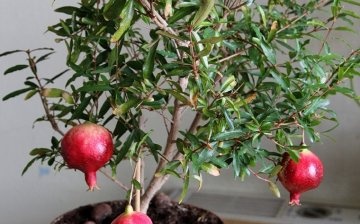
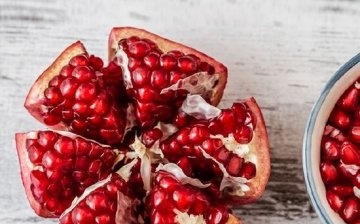
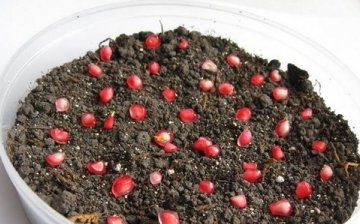

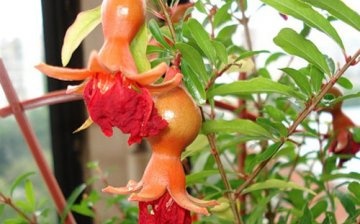
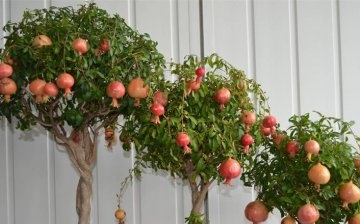
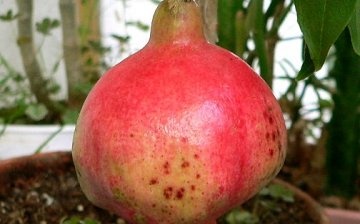







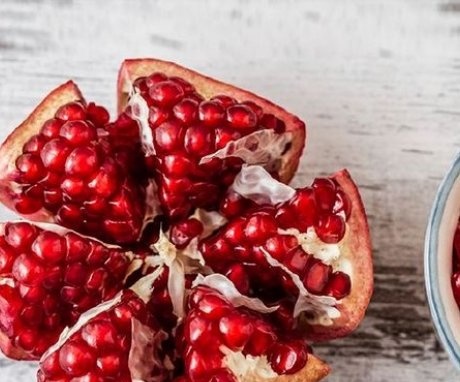

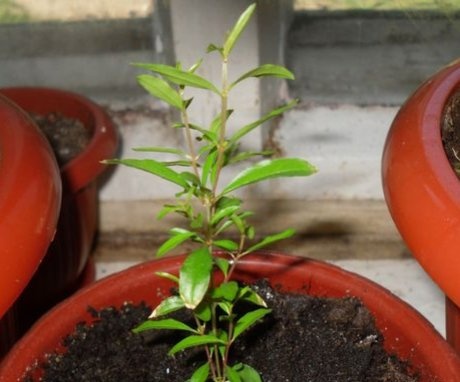
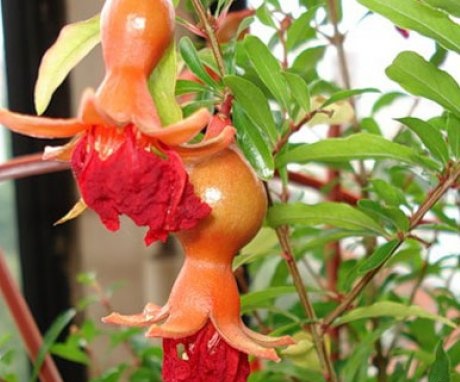
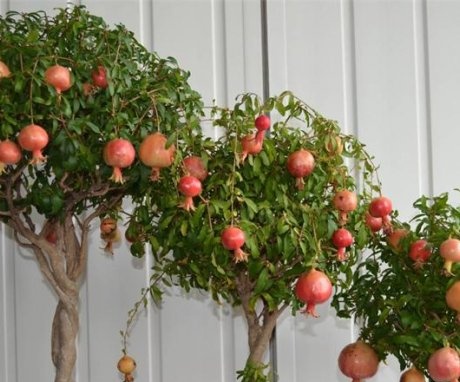
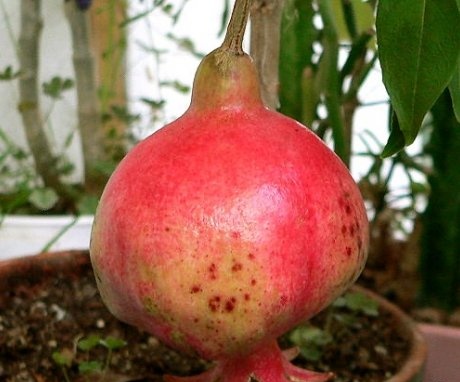
Every time I get inspired to grow something like that on the windowsill, but nothing comes of it. But I haven’t planted grenades yet, now I’ll try. It seems that everything is described in detail, I hope it will work out.